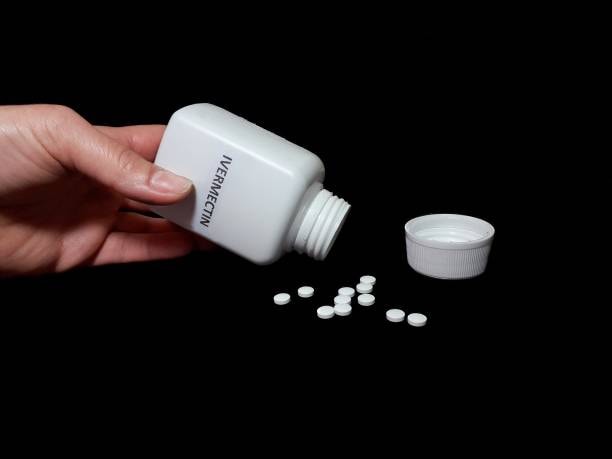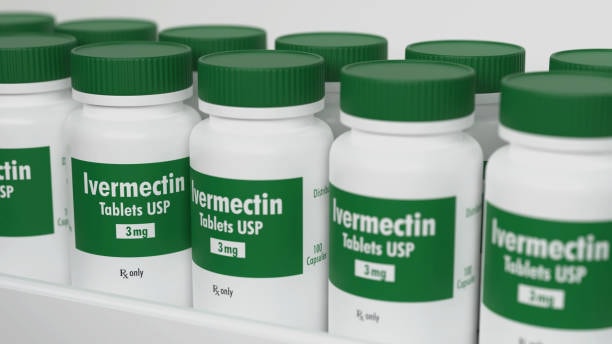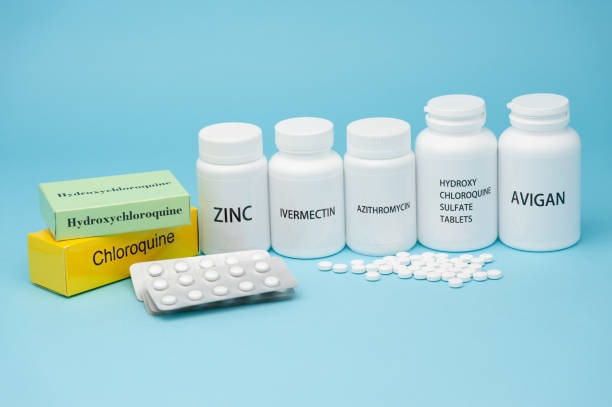
Ivermectin is primarily used to treat onchocerciasis (river blindness) strongyloidiasis (intestinal infection) and other worm infections. It is an anthelmintic drug that is prescribed for various parasitic infections. It works against infections by interfering with the muscle and nerve functions of worms, paralyzing and then killing them.
Significance of Understanding Resistance in Treatment Efficacy
It is crucial to understand the resistance mechanism for an efficient treatment of malaria transmission in order to reduce malaria transmission, as it directly influences the healthcare costs, patient outcomes, and success of the treatment. By understanding how parasites develop resistance, patient care can be improved, the emergence of new resistance mechanisms can be prevented and more efficient therapies can be developed.
- Drug resistance considerably reduces the impact of medicines making it difficult to treat infections and illnesses.
- Resistance can extend your hospital stays, leading to more expensive treatments and spike mortality rates straining the healthcare systems.
- Comprehending the resistance mechanisms is vital for producing and developing new medications and healing strategies to overcome resistance ensuring consistent success in combating diseases.
- Knowing drug resistance mechanisms helps create tailored treatment strategies to target specific resistance pathways that lead to improved treatment outcomes.
- Being aware of the resistance allows the better management of antibiotic use, prevents the spread of resistant organisms, and helps create strategies to alleviate resistance.
Mechanism of Action of Ivermectin
Ivermectin interferes with the nerve and muscle functions of infection-causing worms by inactivating and destroying them. It targets the nervous and muscular systems of parasites, including the detoxification mechanisms involved. It particularly binds to glutamate-gated chloride channels in the nerve cells and muscle cells of parasites causing their hyperpolarization, inactivation, and the death of the parasite.
- Ivermectin targets glutamate-gated chloride channels found in nerve and muscle cells of insects and parasitic worms.
- Ivermectin binds to these channels makes them open and allows an increased influx of chloride into the cells of the parasite.
- This influx of chloride ions causes hyperpolarization of the cell membrane making the parasite unable to transmit nerve signals.
- The disturbance in nerve and muscle cell function leads to paralysis and eventually the death of the parasite.
The Emergence of Ivermectin Resistance
Ivermectin resistance is becoming apparent in various parasite populations. It is happening due to certain factors such as widespread use and selective pressures from treatment especially in ectoparasites and livestock. The resistance may contribute to unsuccessful treatments making the parasitic infections unmanageable. The resistance mechanism usually involves modifications in genes encoding proteins (P-glycoproteins) which work as efflux pumps carrying Ivermectin out of the cells.
Ivermectin resistance mechanisms:
- P-glycoproteins, a protein that acts as membrane transporters and pumps out the drugs from the cells including Ivermectin. Increased expression of mutations of P-glycoproteins contributes to reduced drug sensitivity.
- ABC transporters, another group of transporters also play a crucial role in Ivermectin resistance, especially in Strongyloides ratti.
- Modifications in ligand-gated ion channel receptor subunits and beta-tubulin also lead to Ivermectin resistance in certain nematodes.
- Increased expression of enzymes involved in detoxification such as cytochrome P450 has been noticed in resistant ectoparasites possibly leading to resistance.
Emergence and Influence of Ivermectin Resistance:
Ivermectin resistance has appeared in many nematode populations including cattle, horses, and sheep. It is reducing the efficacy of this anthelmintic drug making it difficult to control parasitic diseases. Ivermectin resistance monitoring is essential for both managing resistant populations and developing strategies for alleviating resistance (using various anthelmintics or implementing rotational plans).
For instance, Ivermectin resistance in sheep nematodes is a considerable concern. Repeated Ivermectin treatment in S. ratti-infected rats has been shown to develop Ivermectin resistance. Ivermectin resistance has appeared in ectoparasites such as scabies mites and ticks.
The appearance of Ivermectin resistance is a severe concern in both veterinary medicine and human medicine influencing the control of parasitic diseases. Understanding the mechanisms of resistance, including ivermectin detoxification, and executing suitable strategies is vital for maintaining the efficiency of Ivermectin treatment and other anthelmintic drugs.
Ivermectin resistance may occur due to various factors such as inadequate treatment schedules, drug misuse or overuse, and the presence of sheltered populations. Moreover, genetic alterations in the parasites such as gene mutations in glutamate-gated chloride channels contribute to resistance, especially in the context of single-dose ivermectin.
Factors Contributing to The Development of Resistance
Overuse and misuse in humans and animals:
For resistant parasite populations, mass drug administration can lead to frequent and continuous use of a single medicine without alternatives to other drugs. Using sub-therapeutic dosage or treating too uncommonly allows resistant parasites to survive and reproduce, contributing to a rise in resistance.
Mutations in GluCIRs:
Mutations in genes encoding glutamate-gated chloride channels, the prime target of Ivermectin, can diminish the drug’s effectiveness.
Gene mutations:
Mutations in genes including the ABC transporter involved in drug metabolism or efflux mechanisms also contribute to resistance.
Population refugia:
The presence of parasite populations that are not exposed to Ivermectin can allow resistant parasites to repopulate the susceptible population leading to resistance.
Host genetic variation:
Genetic variations in the host may influence how Ivermectin gets metabolized and distributed in the body possibly impacting parasite response.
Treatment efficiency:
Inadequate treatment efficiency may allow a part of the parasite population to survive possibly those with resistance mechanisms.
Parasite biology:
The individual biology of the parasite species can impact how resistance occurs and how fast it emerges.
Identifying Ivermectin Resistance

Identifying the resistance of Ivermectin involves evaluating the response to treatment and assessing potential resistance mechanisms in a population. The prime approach is the Faecal Egg Count Reduction Test or FECRT which involves comparing the egg counts before and after the treatment. Moreover, in vitro drug sensitivity assays can be implemented to analyze the survival and motility of parasites in the presence of various concentrations of Ivermectin.
Faecal Egg Count Reduction Test (FECRT)
A sample of parasites is taken and treated with Ivermectin and then faecal samples are collected to evaluate egg counts before and after Ivermectin treatment. If the egg count reduces notably (more than 90% reduction), the treatment is considered effective. On the other hand, according to parasites and vectors, if the reduction is less than 90%, it indicates potential resistance. This test is beneficial for large-scale surveys and screening Ivermectin-treated populations.
In Vitra Drug Sensitivity Assays
Parasite larvae from nematodes and other infection-causing parasites are exposed to various concentrations of ivermectin in a controlled environment. The amount of Ivermect required to inhibit parasitic survival or parasite mortality is compared between sensitive and resistant strains. Resistant strains are more likely to tolerate the higher concentrations of Ivermectin. The assay analyses the ability of Ivermectin to reduce parasite movement. It examines the influence of Ivermectin on parasite development in a controlled environment.
Genetic and molecular Approaches
Research continues to recognize particular genes and mutations that lead to Ivermectin resistance. Some studies have targeted genes associated with drug efflux. Detoxification mechanisms and modified focuses of Ivermectin action. Certain techniques including PCR can be used to recognize specific mutations in resistant genes.
Additional Considerations:
Identifying the specific resistance mechanisms is vital for developing effective strategies to over this problem. These mechanisms include modifications in Ivermectin targets, enhanced drug efflux, and enhanced detoxification processes. Regular screening of Ivermectin efficacy is essential to detect the emergence and spread of Ivermectin resistance. Common tactics to mitigate Ivermectin Ivermectin resistance include using alternative antiparasitic drugs, rotating treatment regimens, and enhancing sanitation practices to diminish parasite burden.
Symptoms and Signs of Reduced Efficacy in Treatment
Reduced efficiency of Ivermectin treatment may contribute to the persistence and worsening of symptoms such as headache, chills, fever, and malaise along with the emergence of new signs and symptoms. Precisely, if Ivermectin treatment is not working successfully, patients may experience increased or persistent fever, chills, and headache. Moreover, the appearance of new symptoms such as organ failure or jaundice indicates treatment failure.
Although Ivermectin resistance is less common in humans as compared to livestock still a significant concern. The reports of Ivermectin resistance have appeared in certain parasitic nematodes including those causing onchocerciasis, strongyloidiasis, and cattle tick infestations. Ivermectin resistance in scabies mites has been mentioned in some cases, especially with its intensive and prolonged use.
The precise mechanisms of Ivermectin resistance are being studied but research shows that mutations in genes encoding ion channels and P-glycoprotein transporters may have a significant role in resistance.
Challenges Associated with Ivermectin Resistance
Resistance to Ivermectin and associated medications is a considerable concern for parasite control. The exact mechanism of ivermectin resistance in nematode parasites is currently not known. Some P-glycoproteins and multidrug resistance proteins have been known to act as membrane transportes which pump medications from the cells.
Ivermectin resistance is emerging due to various factors such as overuse, misuse, and the evolution of parasitic populations including malaria mosquitoes with mechanisms such as modifications in P-glycoprotein expression and mutations in glutamate-gated chloride channels.
Impact on Public Health and Disease Control
- Ivermectin has become less efficient in controlling nematode infections contributing to treatment failures and more disease burden.
- Uncontrolled nematode infection can contribute to more risk of complications, and various health concerns in humans as well as animals such as anemia, malnutrition, and developmental problems.
- The emergence of Ivermectin resistance demands the development and use of alternative anthelmintic drugs which may also carry the potential for resistance.
Strategies to Combat Resistance
A multifaceted approach is required to combat Ivermectin resistance including being aware of resistance mechanisms, developing resistance management strategies, and considering high-dose ivermectin as alternative treatment methods. It involves recognizing molecular markers for Ivermectin resistance, regulating susceptibility tests, and utilizing combinations of medicines, improved management practices, and parasite-resistant breeds.
Let’s explore more about the strategies and approaches to combat Ivermectin Resistance efficiently.
Understanding resistance mechanisms
- Recognizing genetic modifications associated with Ivermectin resistance is vital for early detection and monitoring of the resistance.
- Regimenting susceptibility tests using colony and wild-type parasites is necessary to determine the dose required to kill resistant strains.
- Knowing how parasites metabolize Ivermectin through cytochrome P450 can help produce strategies to counter detoxification pathways using synergists.
- Examining how proteins that pump drugs out of cells contribute to resistance can direct to new medicine targets.
Resistance management approches
- Using combination therapies such as Ivermectin with other anthelmintics may slow down the development of resistance particularly if previous anthelmintics remain effective.
- Targeting particular groups of parasites with Ivermectin while maintaining the protection of vulnerable parasites can help preserve susceptible genes.
- Firm quarantine measures can help avoid the introduction of resistant parasite populations.
- Maintaining the parasitic populations that are unexposed to Ivermectin allowing the slow development of resistance is essential to preserve the susceptible genes.
Alternative management methods
- Making use of livestock breeds that are originally resistant to parasites can reduce the necessity for anthelmintic drugs.
- Managing pastures to decrease parasite loads can reduce the pressure on anthelmintics.
- Giving a try to natural alternatives or botanical dewormers can diminish the dependence on chemical options.
- Developing antiparasitic vaccines against parasites can deliver a long-term solution to parasite control.
Other approaches
- Educating people about the appropriate use of Ivermectin can significantly help prevent resistance ensuring sufficient treatment and avoiding subtherapeutic doses.
- Discovering ways to extend the stay of Ivermectin in the blood through innovative formulations can increase the effectiveness and diminish the pressure of resistance.
- Development of new anthelmintic drugs, strategies to prevent resistance, and targeting different pathways can help overcome this problem.
Alternative Treatment Options

Antiparasitic medicines are used to treat various infections caused by parasites such as ectoparasites, helminths, and protozoa. They fight infections by killing the parasites or impeding their growth.
Common types of antiparasitic medicines or anthelmintics are:
- Antiprotozoals are used to treat infections caused by protozoa including giardiasis, trichomoniasis, and malaria.
- Antihelminthics are used to treat infections caused by various parasitic worms including tapeworms, pinworms, and roundworms.
- Ectoparasiticides are used to kill lice, scabies, and other external parasites.
Antiparasitic Drugs
Some common antiparasitic medications that can be used as an alternative to Ivermectin in case of Ivermectin resistance are as mentioned below:
Albendazole:
Albendazole is widely used to treat various infections caused by worms. It is prescribed for the treatment of neurocysticercosis, a nervous system infection that is caused by pork tapeworms. This drug is also used to treat cystic hydatid disease of the lung, liver, and peritoneum, the infection caused by dog tapeworms.
Diethylcarbamazine:
It is prescribed to treat certain worm infections. Diethylcarbamazine works by killing the infection-causing worms. Primarily, it is used for the treatment of Bancroft’s filariasis and Eosinophilic lung (tropical eosinophilia, tropical pulmonary eosinophilia).
Diiodohydroxyquinoline:
Diiodohydroxyquinoline contains 63.9 % iodine. It is orally used to treat amebiasis and some other protozoal intestinal infections and administered vaginally for the treatment of trichomonas infection. It is an antiprotozoal agent primarily used to treat amebic dysentery or amoebiasis. It can also be used to treat bacterial and fungal infections.
Mebendazole:
Mebendazole is used to treat worms. It is mainly used to treat gut infections including threadworms or pinworms and other uncommon worm infections such as roundworm, hookworm, and whipworm. These worms require sugar to live and this drug prevents them from using sugar.
Administration of Anti-Parasitic Medications
Antiparasitic drugs can be administered through various methods including orally, intravenously, and topically. Ivermectin is a particular drug for the treatment of parasitic infections. Ivermectin alternatives depend on the specific conditions that need to be treated and may include other antiparasitic medicines like Moxidectin, Albendazole, or Permethrin.
- Permethrin (topical form) is a typical alternative option to Ivermectin for scabies.
- Permethrin and Pyrethrins are the first-line treatment for head lice and pubic lice and Ivermectin or Malathion are potential alternatives.
- Albendazole or Thiabendazole are alternatives to Ivermectin for strongyloidiasis (parasitic infection).
- Ivermectin is the primary treatment for onchocerciasis however Albendazole is also considered an alternative in combination with other medicines.
The increase in drug resistance cases is a major concern for treatment and control of parasitic infections demanding the use and development of alternative treatment options. The best alternative, including the appropriate ivermectin doses, depends on the precise parasitic infection and individual patient needs. Always consult your healthcare provider to find the suitable treatment for your particular health concerns as they can better analyze your specific needs and consider potential interactions and the likelihood of side effects.
Future Directions in Research
Investigating the molecular basis of resistance comprises comprehending the specific genetic and cellular mechanisms that allow bacteria, insects, and plants to withstand the impacts of drugs, pathogens, and other stressors. It includes recognizing mutations in genes, modifications in protein function, and changes in metabolic pathways that lead to resistance.
Exploring the molecular basis of resistance
Mutations:
Gene mutations may contribute to resistance. For instance, bacteria mutations in genes encoding drug targets are included in drug metabolism and may lead to antibiotic resistance.
Horizontal gene transfer:
Bacteria can develop resistance genes from other bacteria through conjugation, transformation, and transduction contributing to the rapid spread of resistance.
Gene intensification:
An increased number of genes encoding proteins involved in drug resistance enhances the effect of resistance mechanisms.
Drug efflux:
Bacteria can eliminate medications from their cells using efflux pumps diminishing the concentration of drugs inside cells and reducing the effectiveness of drugs.
Enzymatic deactivation:
Some bacteria produce enzymes that can modify or degrade drug activity making them inactive.
Target modification:
Bacteria can change the target of the drug like an enzyme or protein that the drug binds to reducing the ability of the drug to bind and inhibit it.
Metabolic changes:
Organisms can modify their metabolic pathways to bypass the impact of a drug or create alternative molecules that can counteract the effect of the drug.
Significance of exploring the molecular basis of resistance
Knowing and understanding the molecular basis of resistance allows the development of new medicines and strategies to combat resistance mechanisms. Recognizing the molecular mechanisms of resistance contributes to more precise and rapid diagnostic tests. Comprehending how resistance occurs and spreads helps with the implementation of strategies to avoid its emergence such as appropriate use of anthelmintics and improved sanitation practices.
Long-Term Strategies for Managing Resistance
Long-term approaches for the management of Ivermectin resistance are focused on reducing the dependence on drugs, executing integrated control methods, and comprehending the mechanisms of resistance.
- Reduced frequency of treatment
- Targeted treatments
- Combined management strategies
- Combination therapies
- Nonchemical management practices
- Veterinary management
- Refugia management monitoring resistance
- Determining molecular markers
- Predicting the occurrence and spread of resistance
- Developing new anthelmintic drugs
- Investigating the potential of antiparasitic vaccines
- Using botanical dewormers
Closing Words
Ivermectin resistance is a considerable concern in parasite control and management in terms of human as well as veterinary medicine. As these infectious parasites develop resistance mechanisms, the efficiency of Ivermectin diminishes leading to treatment failures and possibly worsening parasitic infections. Mechanisms of Ivermectin resistance include alterations in drug target sites, increased drug metabolism, and upregulation of efflux pumps.
Ivermectin resistance declines the ability of the drug to kill or suppress parasitic populations influencing treatment outcomes. It may work effectively to treat or control parasitic infections demanding alternative drugs or more complex treatment approaches. In situations where Ivermectin is the primary treatment, resistance may contribute to increased morbidity and mortality associated with parasitic infections.
Ivermectin resistance has been found in various parasitic species such as cattle ticks, nematodes in livestock, and ectoparasites. The overuse of drugs especially in veterinary settings may lead to the emergence and spread of resistant strains. Being aware of the resistance mechanisms and focusing on new strategies to combat resistance is essential for better parasitic control. Moreover, appropriate dosing, right treatment intervals, and proper use can significantly help delay the occurrence of resistance.
References
Comparative Analysis On Transcriptions Of Ivermectin-Resistant And Susceptible Strains Of Haemonchus Contortus
Ivermectin is among the widely used anthelmintics in both human and veterinary medicine, especially in control of mosquito populations . Its effectiveness is increasingly compromised by prevalent resistance and the exact mechanisms of resistance are unclear for most parasitic nematodes (Haemonchus contortus).
In this study, an H. contortus Ivermectin-resistant strain was isolated and analyzed for the larval development assay. Then comparative examines of the transcriptomics of Ivermectin-susceptible and Ivermectin-resistant adult worms of this parasite were carried out using RNA sequencing and bioinformatics.
A total of 543 and 359 variously expressed genes were recognized in male and female adult worms of resistant strains compared to those of the susceptible strain respectively. Along with several known candidate genes that were supposed to be linked with Ivermectin resistance and whose functions were involved in receptor activity, transport, and detoxification, some new potential target genes were found including those associated with lipid metabolism and structural constituent of cuticle and essential pathways. The outcomes of quantitative real-time polymerase chain reaction established that the transcriptional profiles of selected DEGs including 8 male genes and 10 female genes were constant with those obtained by RNA sequencing.
The results indicate that Ivermectin exerts multiple effects, targeting both neuromuscular and non-neuromuscular systems, and provide valuable insights for further research into the mechanisms of Ivermectin resistance in Haemonchus contortus.
